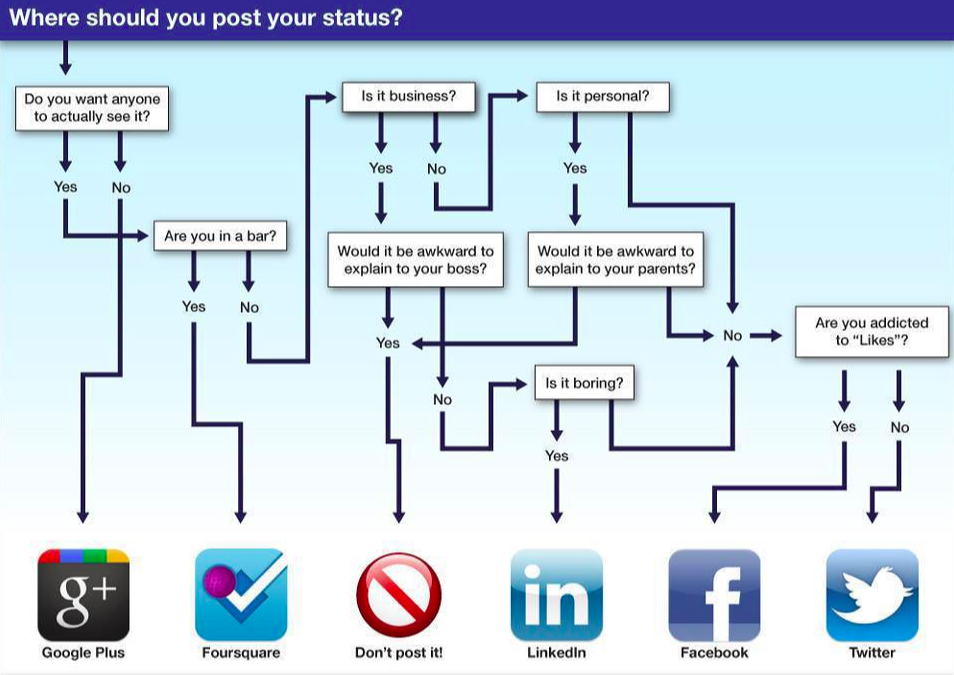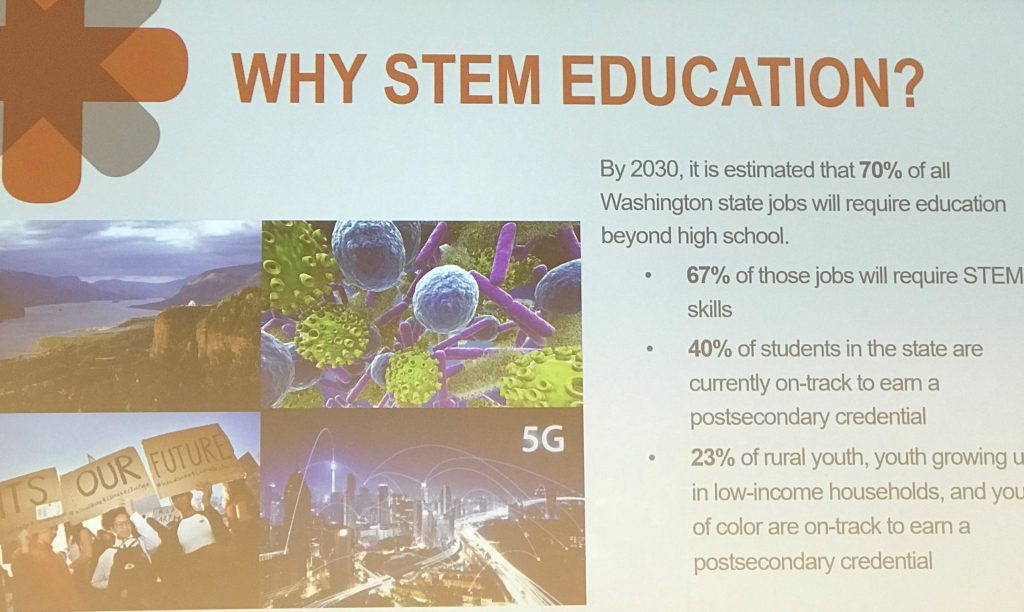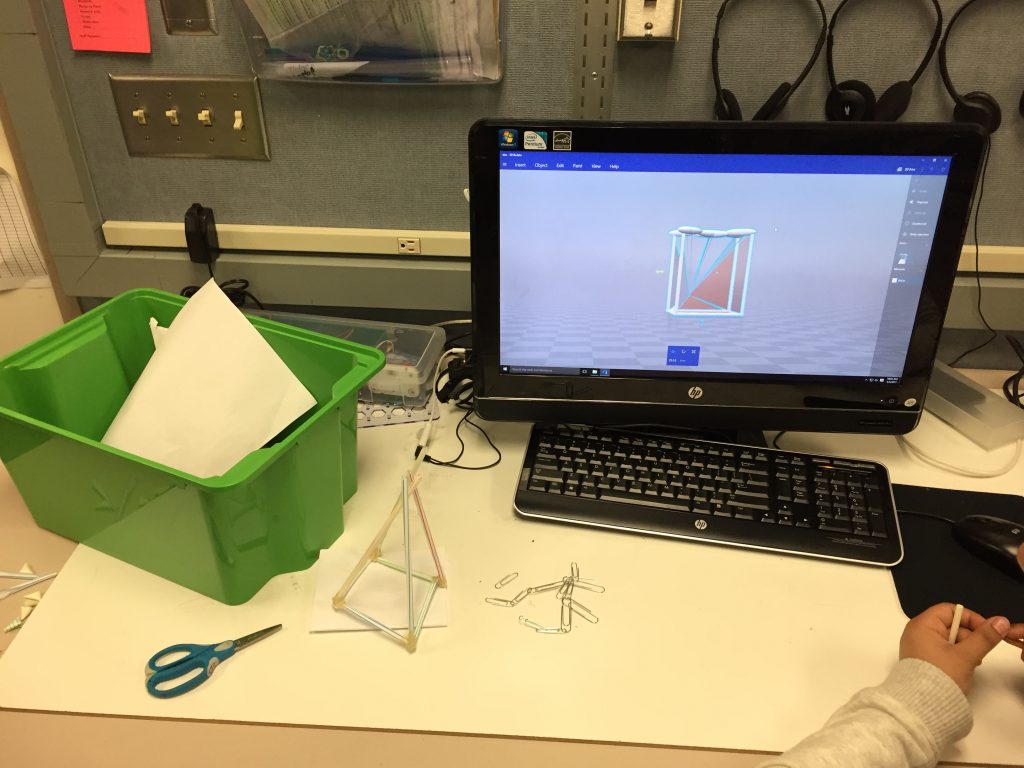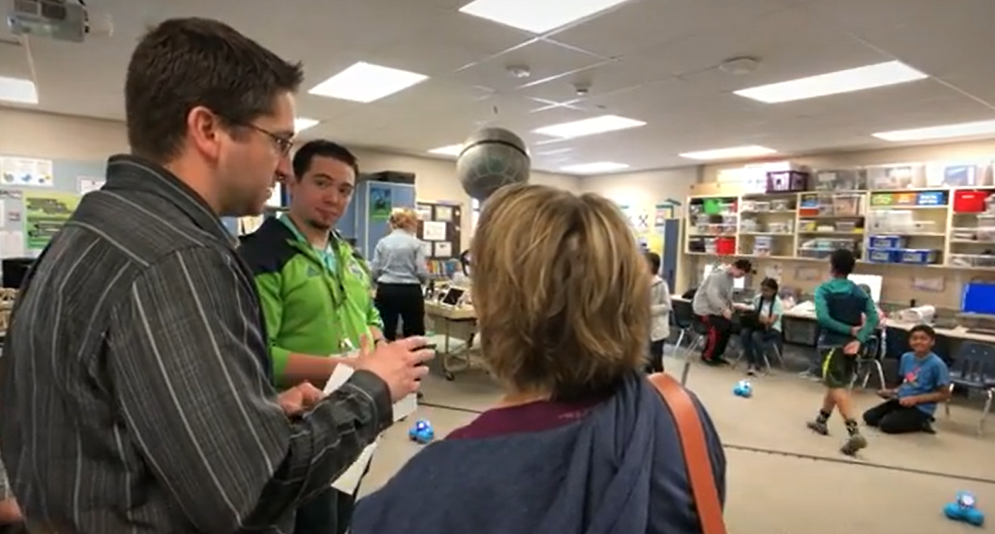
The ISTE Standards for Coaches 3c, “Partner with educators to evaluate the efficacy of digital learning content and tools to inform procurement decisions and adoption,” reinforces the need for educators to collaborate with the emphasis on evaluating efficacy so that effective decisions can be made around digital learning content and tool adoption.

Source: STEM Summit
Evidence: “The first of three topic-specific sessions that I attended at the conference focused on Computer Science in rural Washington. The presenters shared about work done in the central part of the state in conjunction with the TEALS program. One of the main challenges in rural areas is access to qualified instructors coupled with a general lack of localized professional support. TEALS bridges this gap via video conferencing and by connecting new CS teachers with mentors in major metropolitan centers. These mentors may be several hours away so in-person consultations are rare but online support can be relatively frequent. The TEALS program practicing gradual release of responsibility with the goal of having new CS teachers self sufficient by the end of year three. By developing both the human and physical infrastructure, TEALS proves to be an effective measure for supporting CS education in rural areas.”
Explanation: Partnering with educators across a conference to share about partnering with educators in rural settings around efficacy of digital learning content and tools helps inform procurement decisions and adoptions for others interested in the presented outcomes.

Source: Encoding Creative Communication
Evidence: “MakeCode: Microsoft’s entry into the foray of block-based programming is only a couple of years old but has some powerful partnerships. MakeCode’s main strength is through these partnerships and both the virtual and physical computing that this allows. Current partners include micro:bit, Circuit Playground Express, Minecraft, LEGO Mindstorms Education EV3, Wonder Workshop Cue, Arcade, and Chibi Chip. The micro:bit partnership in particular is powerful because students can program a microbit: simulator on a computer web browser and take turns testing their programs on the relatively inexpensive physical micro:bits themselves (a basic microcontroller). The same is true of the Circuit Playground Express simulator as well as the LEGO Mindstorms EV3 simulator which provides a rough but workable simulated example. Long story short, students can write programs for physical devices but test them virtually which increases accessibility and stretches limited physical resources further. With the notable exception of the Wonder Workshop Cue, the remaining options can all be programmed via any browser and have a series of accessible tutorials provided below the programming environment. The micro:bit in particular has a robust set of curriculum available as well as a significant number of accessories.”
Explanation: The forays into providing additional digital tools and access are examples of partnering with educators for development, deployment, and utilization of digital learning content and tools as well as evaluation of the overall efficacy of these resources.

Source: Pivoting from In-Person to Virtual PD
Evidence: “Asynchronous Video Chat Programs: This is where online gets more interesting, in my opinion, and it can truly augment in-person interactions. The ability to record short videos that can then be shared with a group, interacted with, commented on, and viewed or saved for later enhances in-person as well as remote interaction adds quite a bit to the learning experience. There are many options and programs that can be used for this approach, including many of the common video chat programs. The one that is most common and launched this kind of interaction to the mainstream is called Flipgrid. Approaching online interaction with unique tools and approaches helps to make the time more engaging and compensate for some of the aspects lost from being all together. Whether live or virtual, at the end of the day, it all comes back to relationships and a sense of community among participants and the instructors.”
Explanation: Being able to communicate online via video chat programs enhances potential partnerships among educators for both interaction and deployment of these resources once the efficacy has been evaluated.

Source: Technology Standards and Tools for Teachers
Evidence: “Computer assisted design, or CAD, programs help people to create a variety of virtual design versions of real physical objects. This can be as simple as dealing with very basic shapes to things as complex and intricate as microprocessors, engines, and airplanes. There are many advantages to CAD programs, but the most relevant application in this case is the ability to design and interact with virtual versions of physical objects. In many ways, this is the closest virtual version of hands-on manipulatives. There are dozens of CAD programs so one of the biggest challenges is finding the right program to utilize in an educational environment”
Explanation: Digital representations of the physical world allow educators to partner virtually as they create a variety of lessons for digital learning content and tools just as this blog represents an avenue for partnering with teachers anywhere around the efficacy of these concepts.

Source: Gaming the Educational System
Evidence: “One platform for engaging students with a focus on game-based learning via video games is Microsoft’s MakeCode platform. MakeCode Arcade, especially, provides a readily available approach for leveraging this area in the classroom. MakeCode’s coding environment is very intuitive and user friendly. I was able to get on, explore, teach myself, and program my first video game via MakeCode in approximately 15 minutes. The first lesson is a basic environment where a character can be moved around to eat a food item for points with the more items eaten before time lapses then the higher the score (you can play my first MakeCode video game pictured above by clicking here). There are so many possibilities in terms of utilizing this as a means to encourage students to practice content standards. Students could easily design a similar game where the main character needed to “eat” the correct answer to a math problem in order to earn points. Or, students could write a story to go along with the video game adventure and utilize the experience as motivation for a writing prompt. In social studies, this simple mechanism could illustrate an experience around finding appropriate food sources on the Oregon Trail. The list goes on and that’s just via a very simple introductory video game. Very quickly more complex approaches and concepts become possible where students can program to demonstrate their own learning, program games to teach concepts to classmates, program solutions to project-based problems, and much more. Very quickly, students can make the transition from learning to code to coding to learn.”
Explanation: MakeCode provides tremendous opportunity for partnering among educators as the easily designed and built block-based programs can be shared in a variety of ways and this facilitates the ability to share and evaluate this digital learning content and tool whereas then efficacy can be discussed, written about in collaboration with educators as in this blog post excerpt, and demonstrated in school settings.

Source: Social Justice Pedagogy in a Digital Age
Evidence: “Tool functionality should scaffold student communication, ease student management for the teacher, and safely facilitate communication with an authentic audience. Student communication benefits from software that assists students in typing via word prediction, voice to text software, audio/video recording, etc; a few select examples include co:writer, Dragon Speak (most modern word processing applications support this feature), and FlipGrid. Student management software should allow teachers to easily set up, manage, and provide feedback for students among other classroom management features; a couple of platform-specific examples include Google Classroom and Microsoft OneNote. Publication software should prioritize student privacy above all else and provide a mechanism for students to share their work with an authentic audience of some kind; for this, classroom management apps like Class Dojo that allow private communication with parents work well, postings on the school website without identifying information can work, FlipGrid can also work in this setting, social media with careful permissions and guidelines can accomplish sharing, as can limited access student blogging sites, among others.”
Explanation: Being able to scaffold communication is a way for educators to partner around specific student needs both in a physical and virtual space, and these digital learning tools provide effective, expanded access to digital learning content that might not otherwise be accessible to students.

Source: Social Justice Pedagogy in a Digital Age
Evidence: “There’s so much out there in terms of technological options that we, as educators, need to be really careful and focused in terms of the tools that we utilize. There are too many relevant technology tools to list ad nauseam, so general function in terms of general concepts is a better focus in lieu of an attempt at a comprehensive list. From there, educators should focus on tools that facilitate the desired functionality and that are available and supported within the current educational context. This is the type of individualization needed to support teachers with implementation.”
Explanation: Partnering is important for educators when it comes to evaluating the efficacy of digital learning content and tools because the list of these type of resources is endless and growing at an ever-faster pace, so educators must partner together in order to make informed decisions and adoption.

